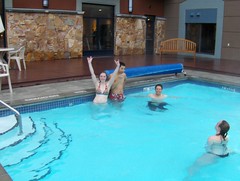
Prof. Dr. F. Birklein of the
Neurologische Klinik
Universität Mainz describes
Abstract Complex regional pain.
This syndrome (CRPS) may develop after limb trauma and is characterized by pain, sensory-motor and
autonomic symptoms. Most important for the understanding of the
pathophysiology of CRPS are recent results of neurophysiological
research. Major mechanism for
CRPS symptoms, which might be
present subsequently or in parallel
during the course of CRPS, are
trauma-related cytokine release,
exaggerated neurogenic inflammation, sympathetically maintained
pain and cortical reorganisation in
response to chronic pain (neuroplasticity). The recognition of these
mechanisms in individual CRPS
patients is the prerequisite for a
mechanism-oriented treatment.
In the beginning of the twentieth century, Paul Sudeck,
a surgeon in Hamburg, Germany, first published a paper
about post traumatic bone dystrophy [56]. He described
a posttraumatic pain syndrome with edema and trophic
changes.As the sympathetic nervous system seems to be
overactive at first glance, the term “Sympathetic Reflex
Dystrophy” was used for many years [11]. Studies, which
raised doubts on the role of the sympathetic nervous
system in the pathophysiology of this pain syndrome,
led to a new descriptive term – “Complex Regional Pain
Syndrome” (CRPS), the official one in recent years [55].
Treatment
The aims of CRPS therapy are the relief of pain and the
maintenance or restitution of function. To achieve this,
therapy has to start as soon as possible. One of the latest tools to be developed in the treatment of CRPS is the Tutor system. Consisting of the HandTutor, ArmTutor, LegTutor and 3DTutor these devices can speed the recovery and relieve the pain of the affected area
Image by Joe Shlabotnik via Flickr
.
The Tutor system has been developed to allow for functional rehabilitation of the whole body including the upper and lower extremity. The system consists of ergonomic wearable devices and dedicated rehabilitation software that provide patient instructions and feedback to encourage intensive massed controlled exercise practice. The Tutor system allows for controlled exercise of multijoints within the normal movement pattern which prevents the development of undesired and compensatory joint movement and ensures better performance of functional tasks. Additional features of the Tutor system include quantitative evaluation, objective follow up and tele-rehabilitation.
The new medical devices are available for children as well as adults and through the use of telerehabilitation and are FDA and CE certified. See www.handtutor.com
No comments:
Post a Comment